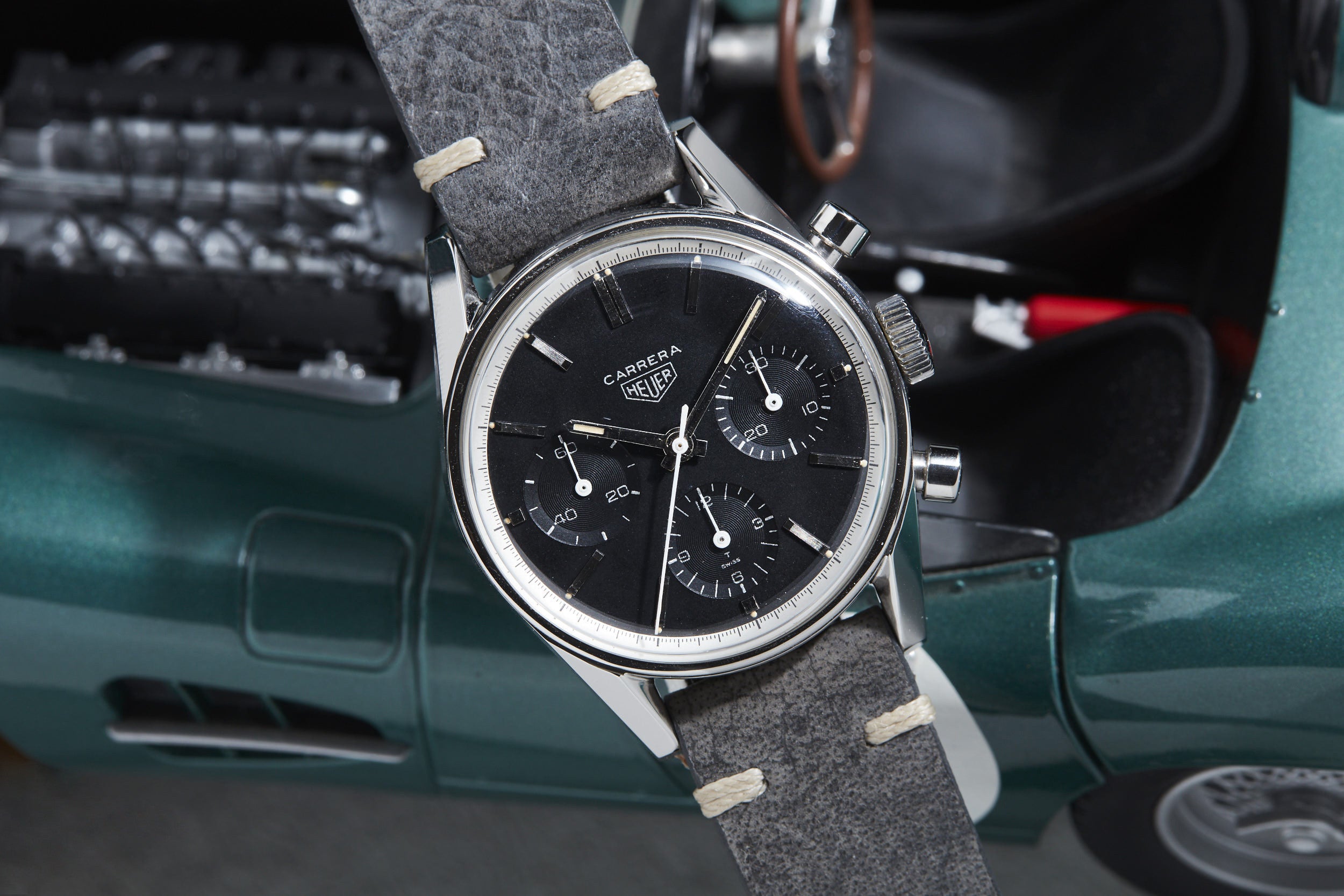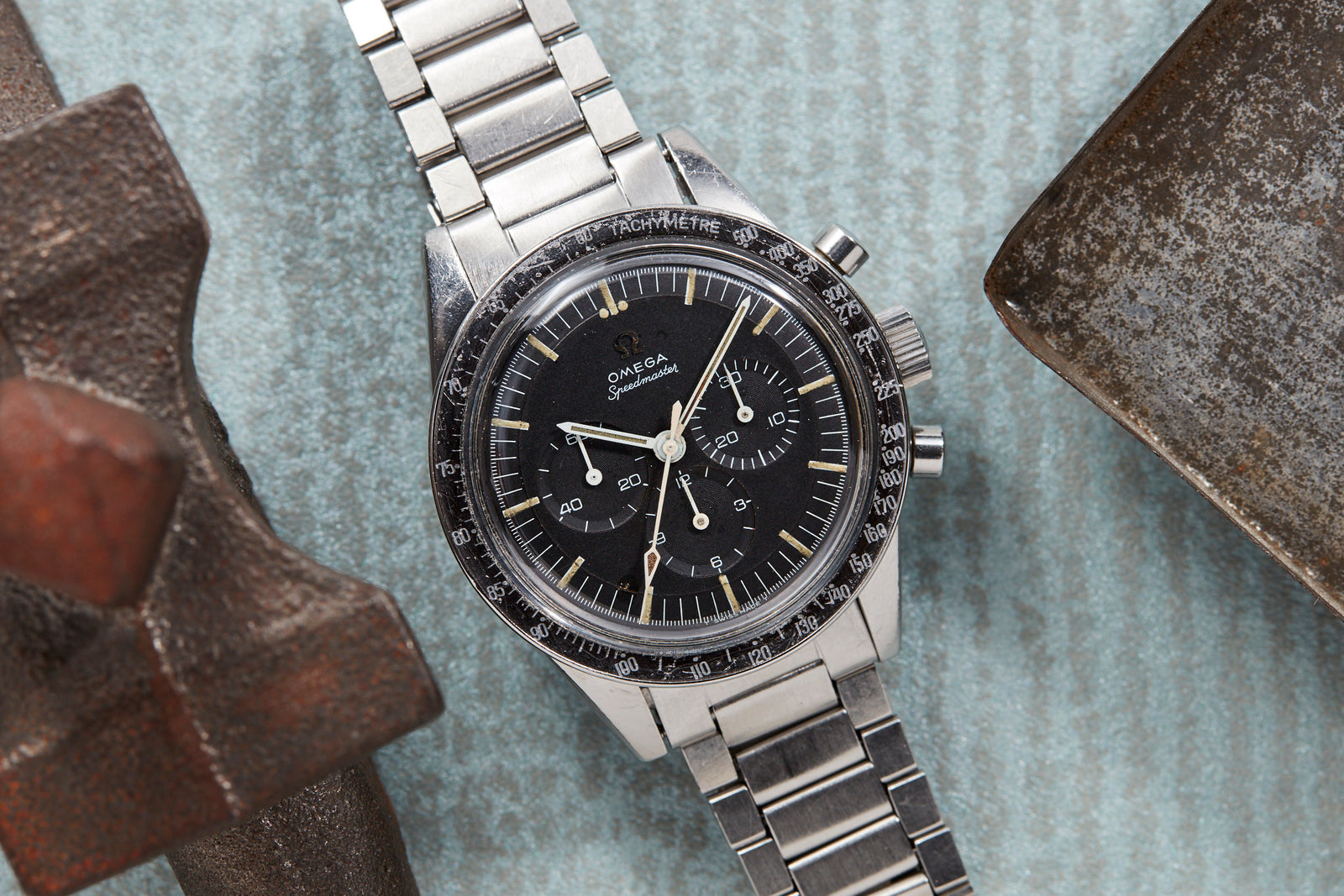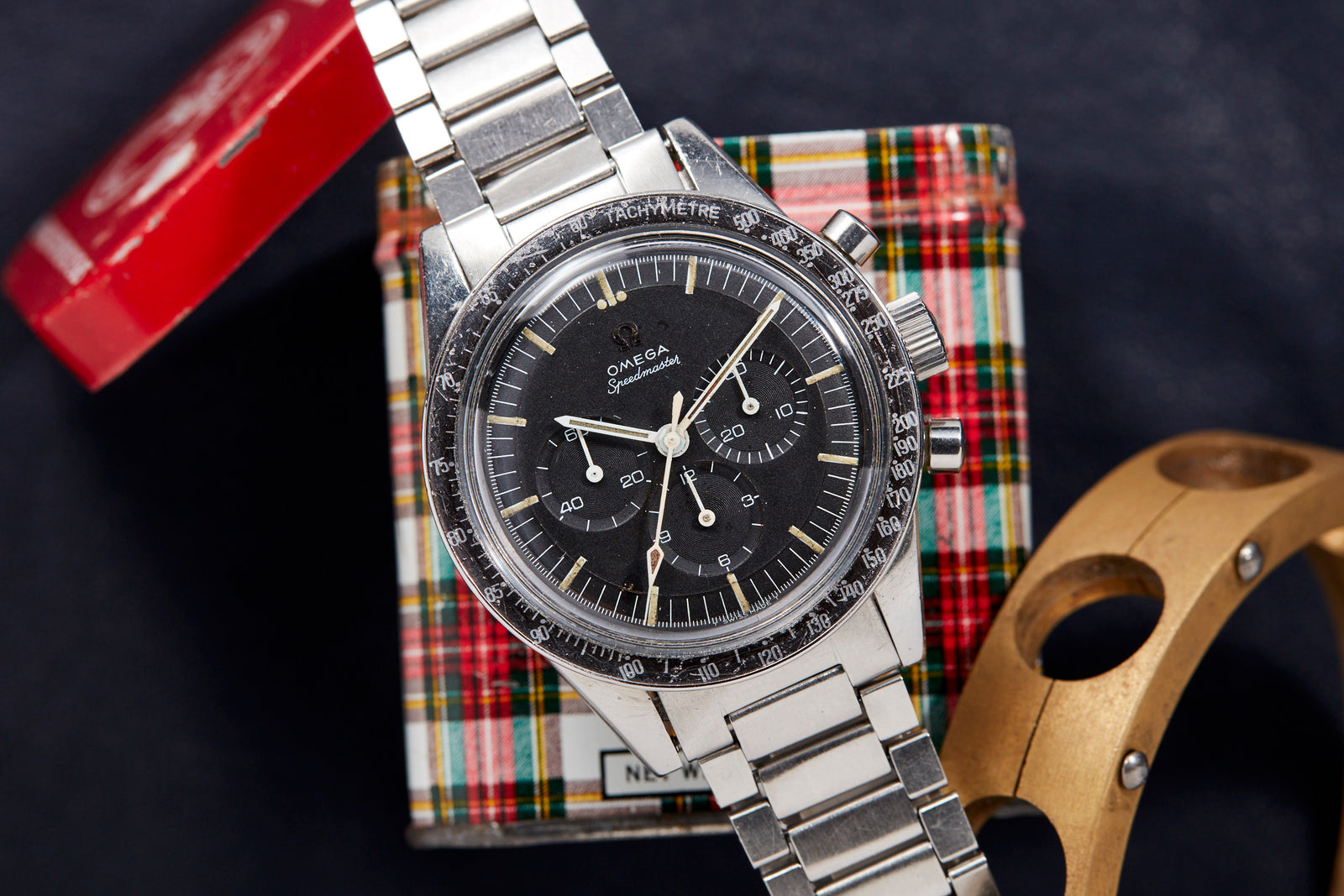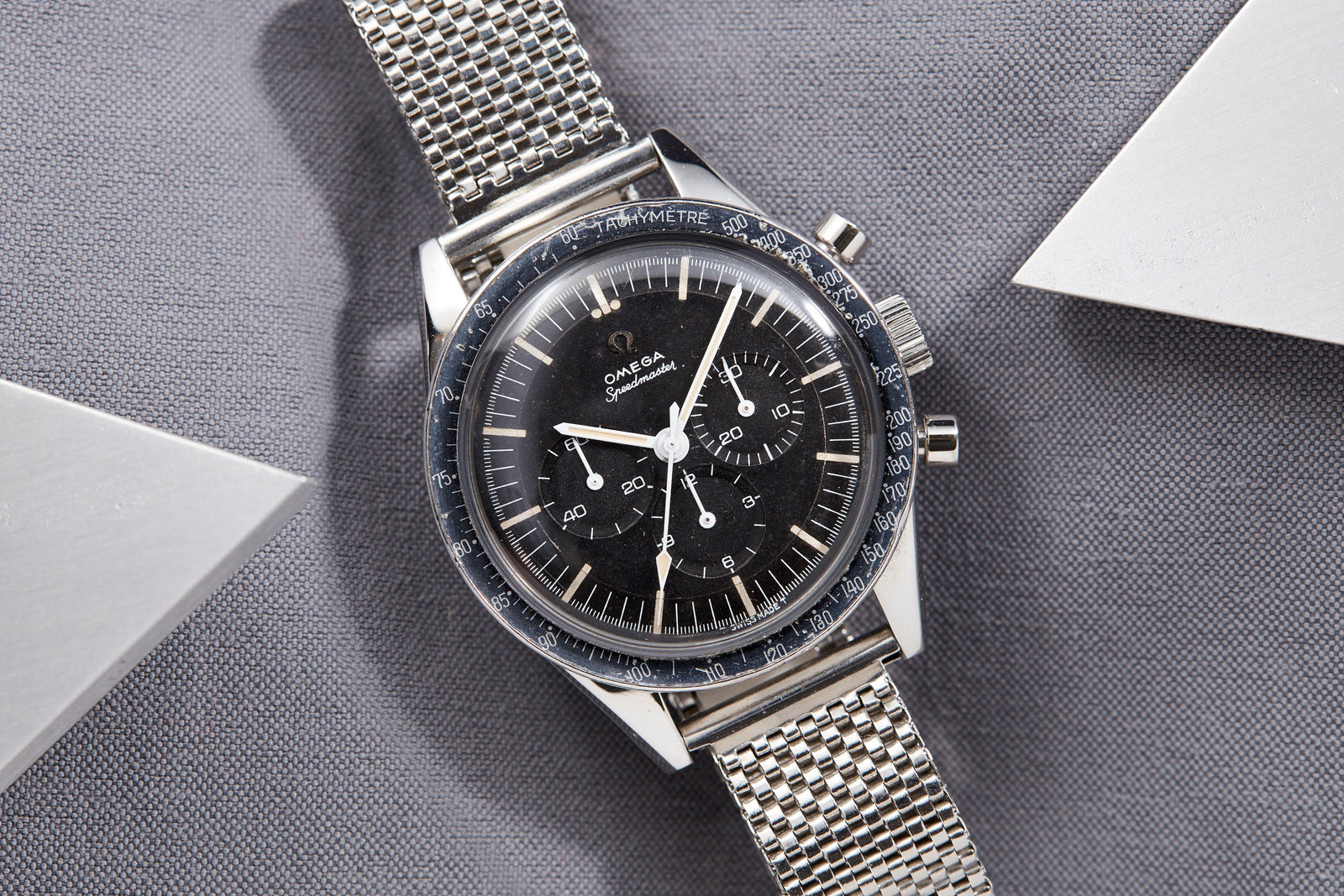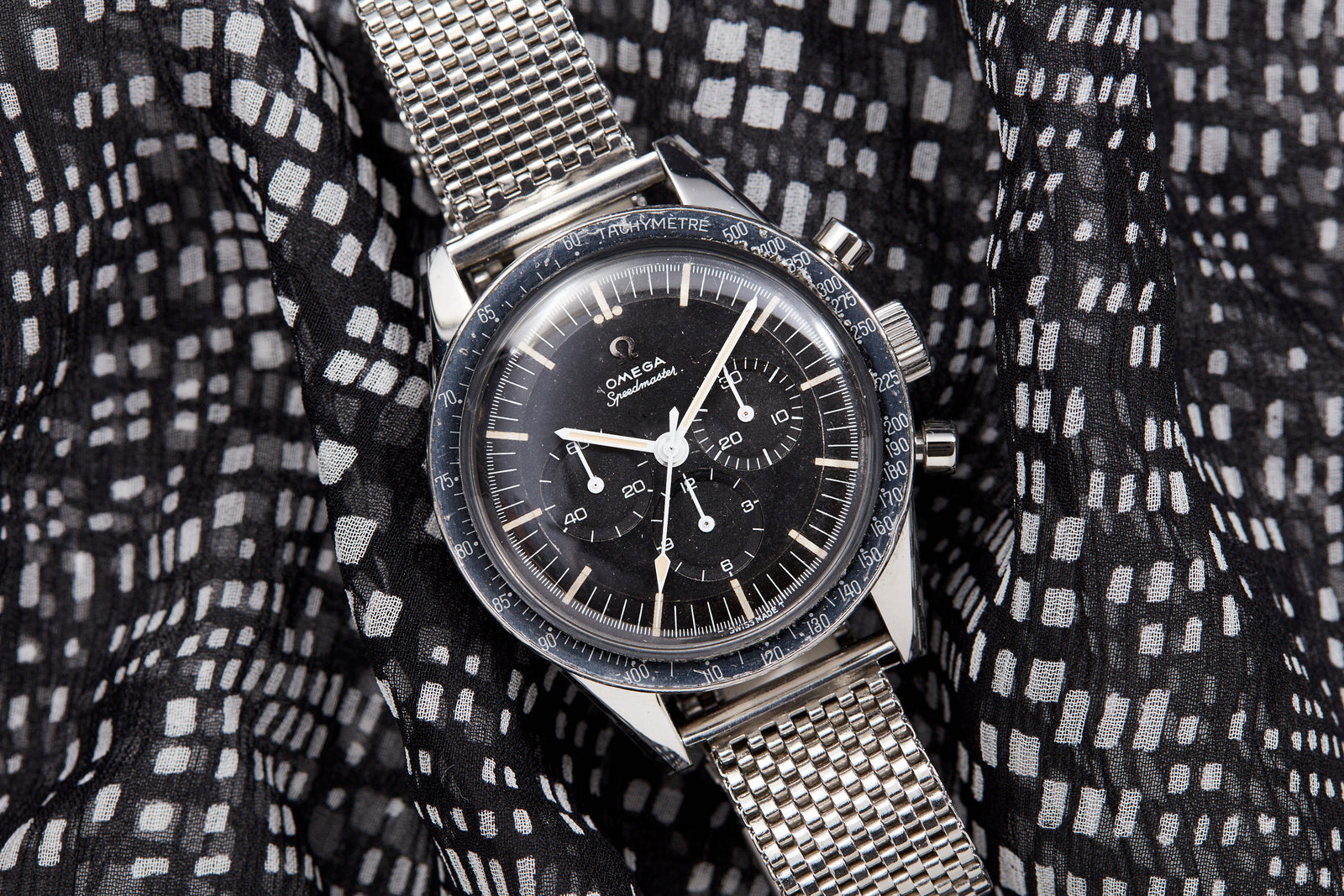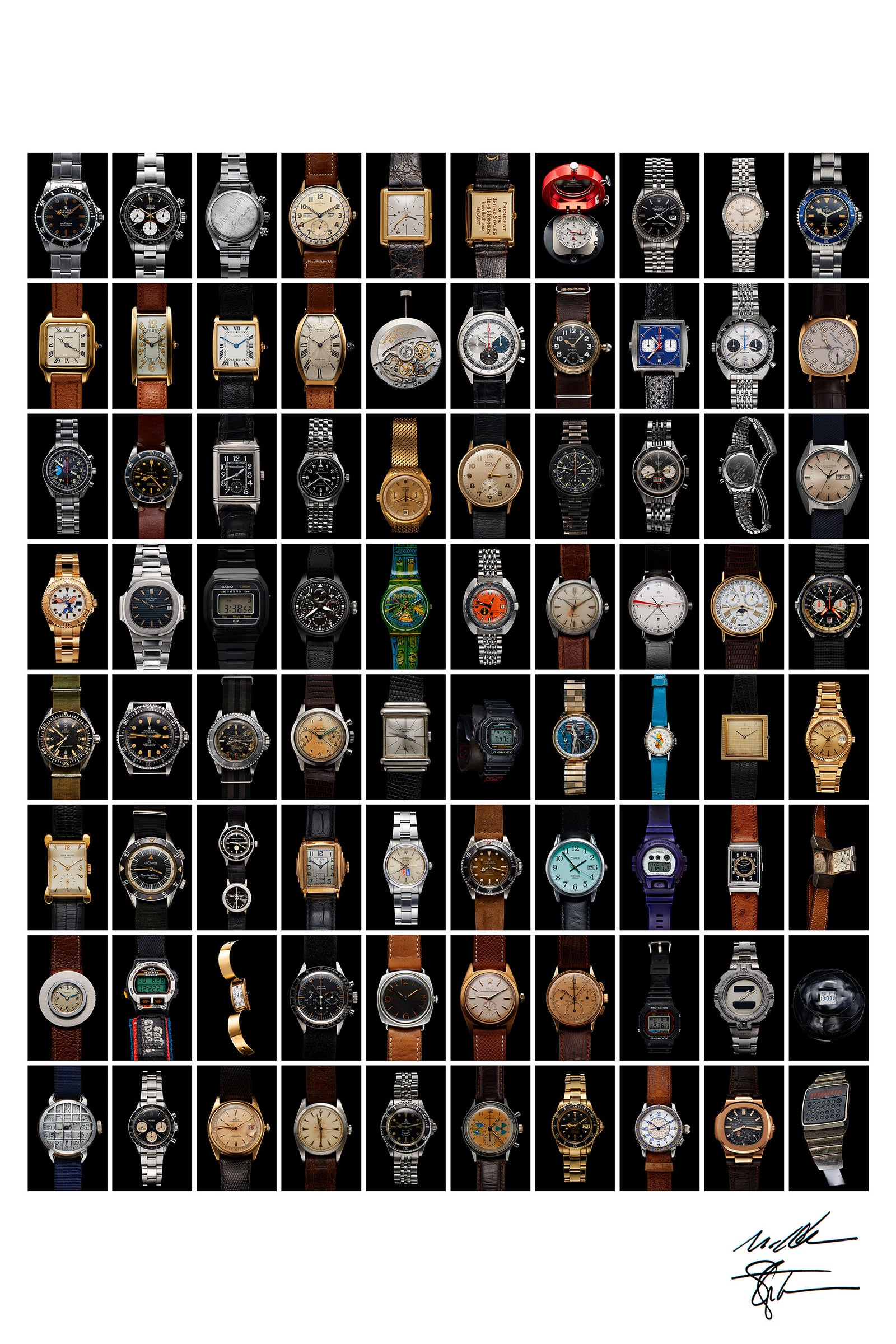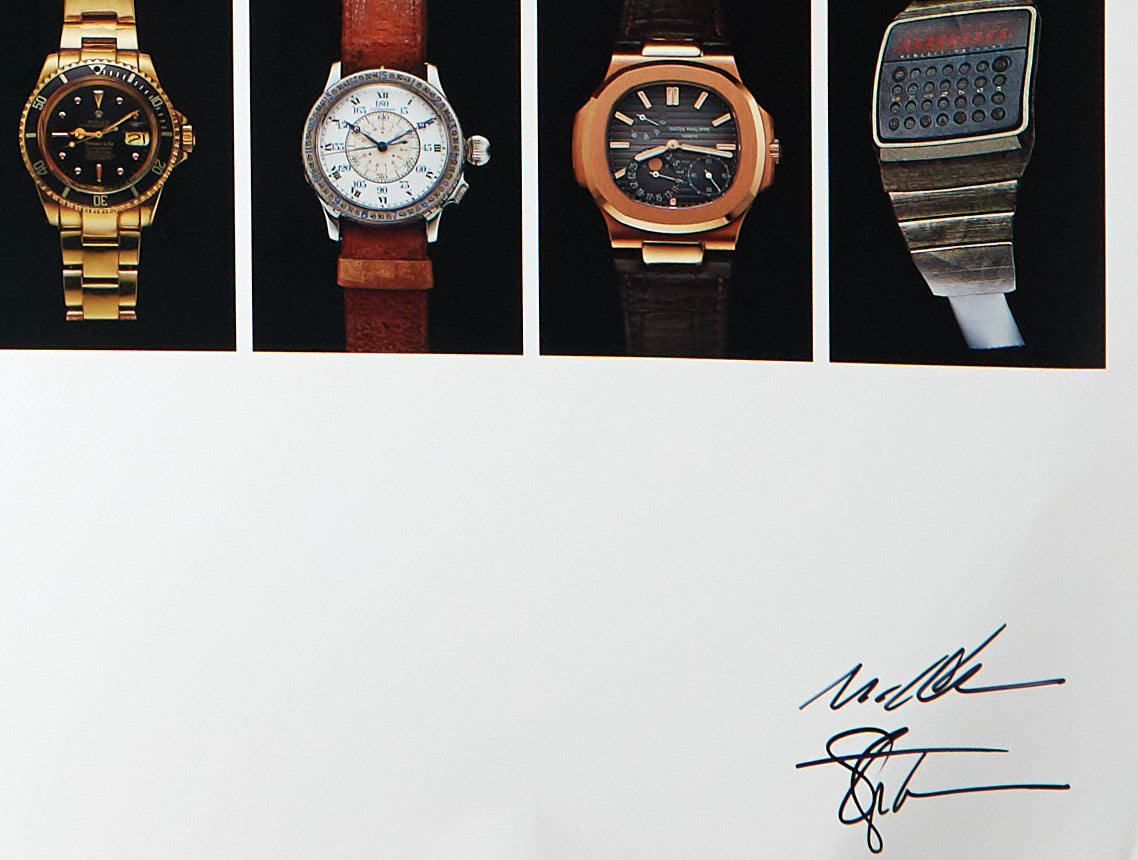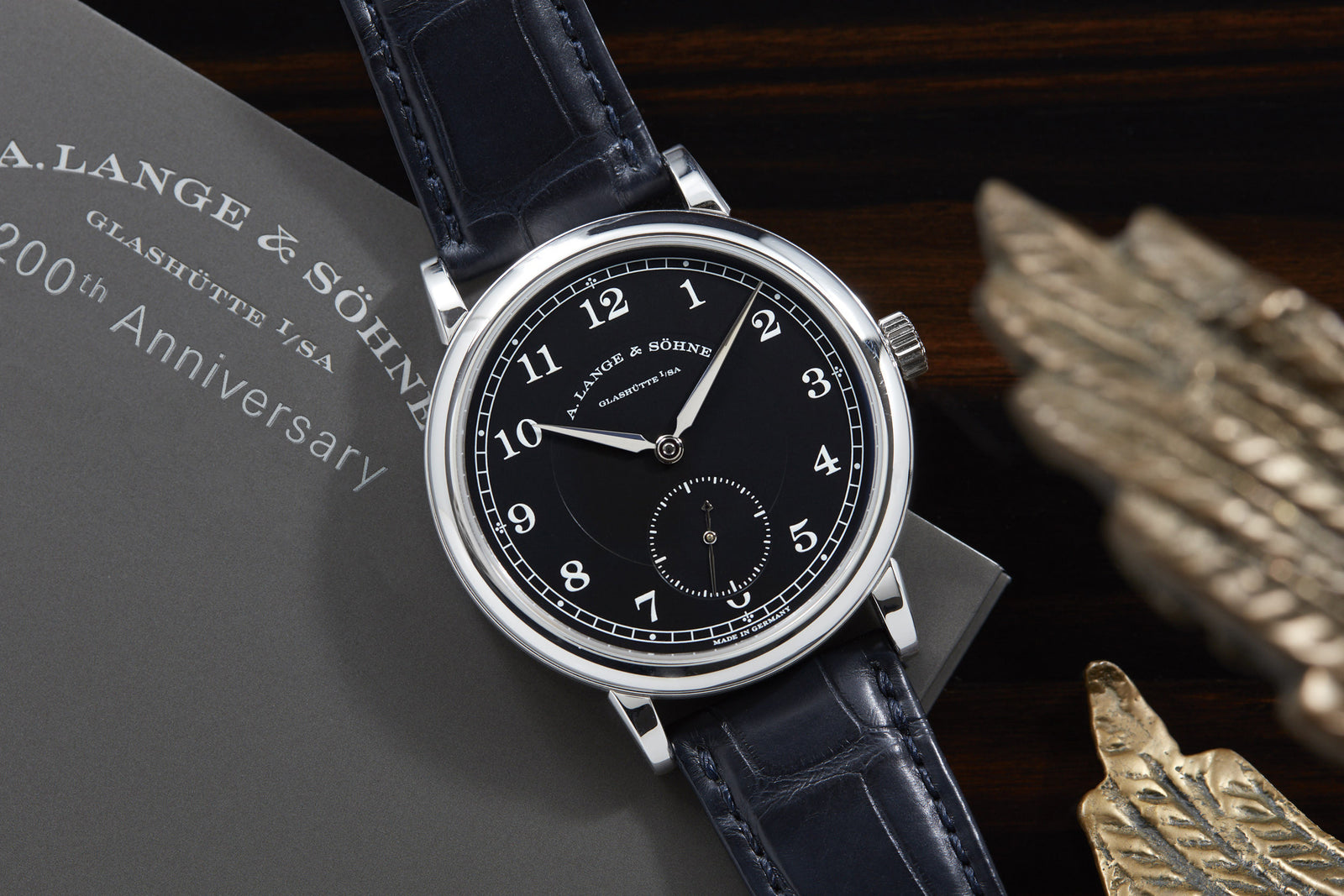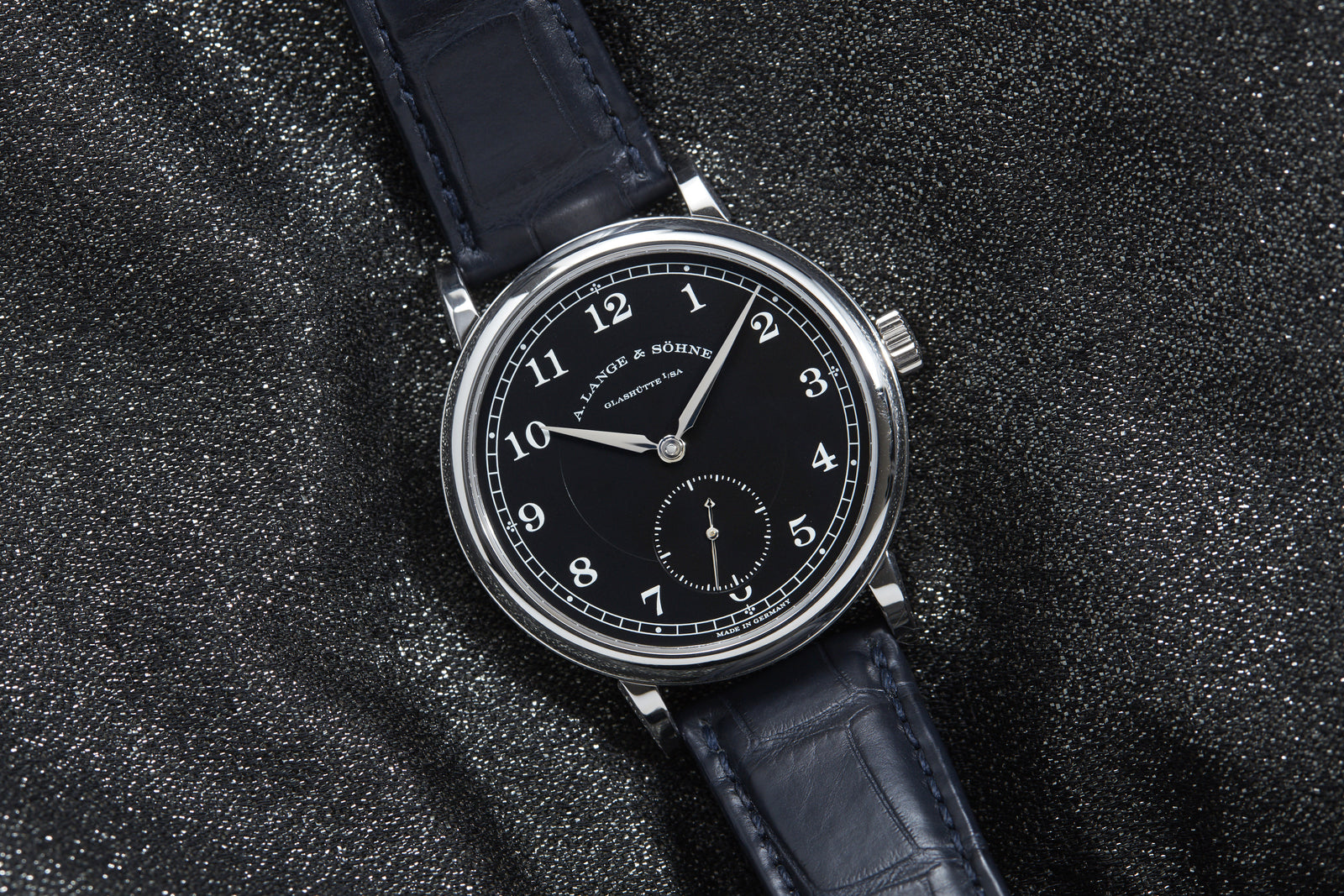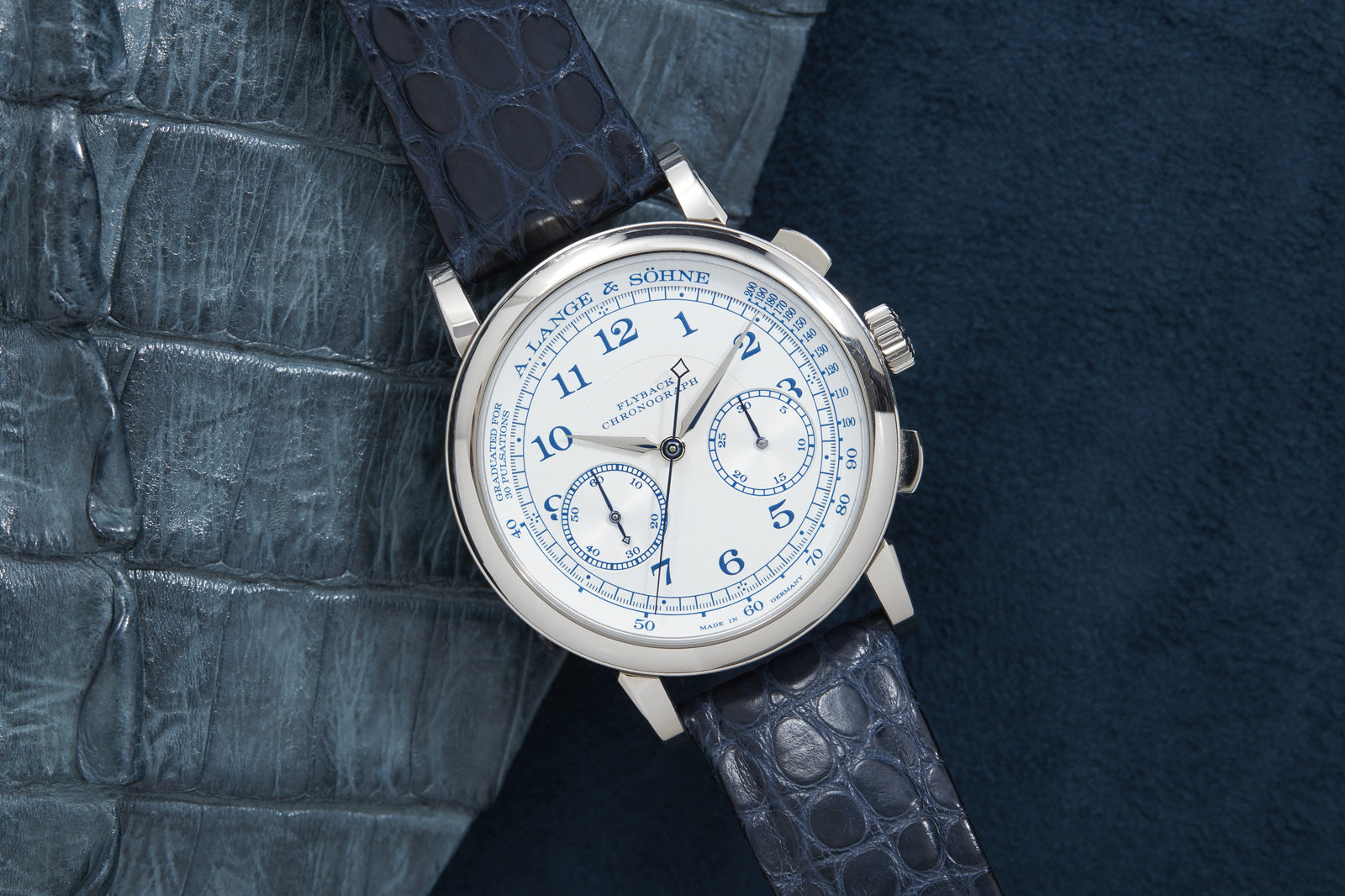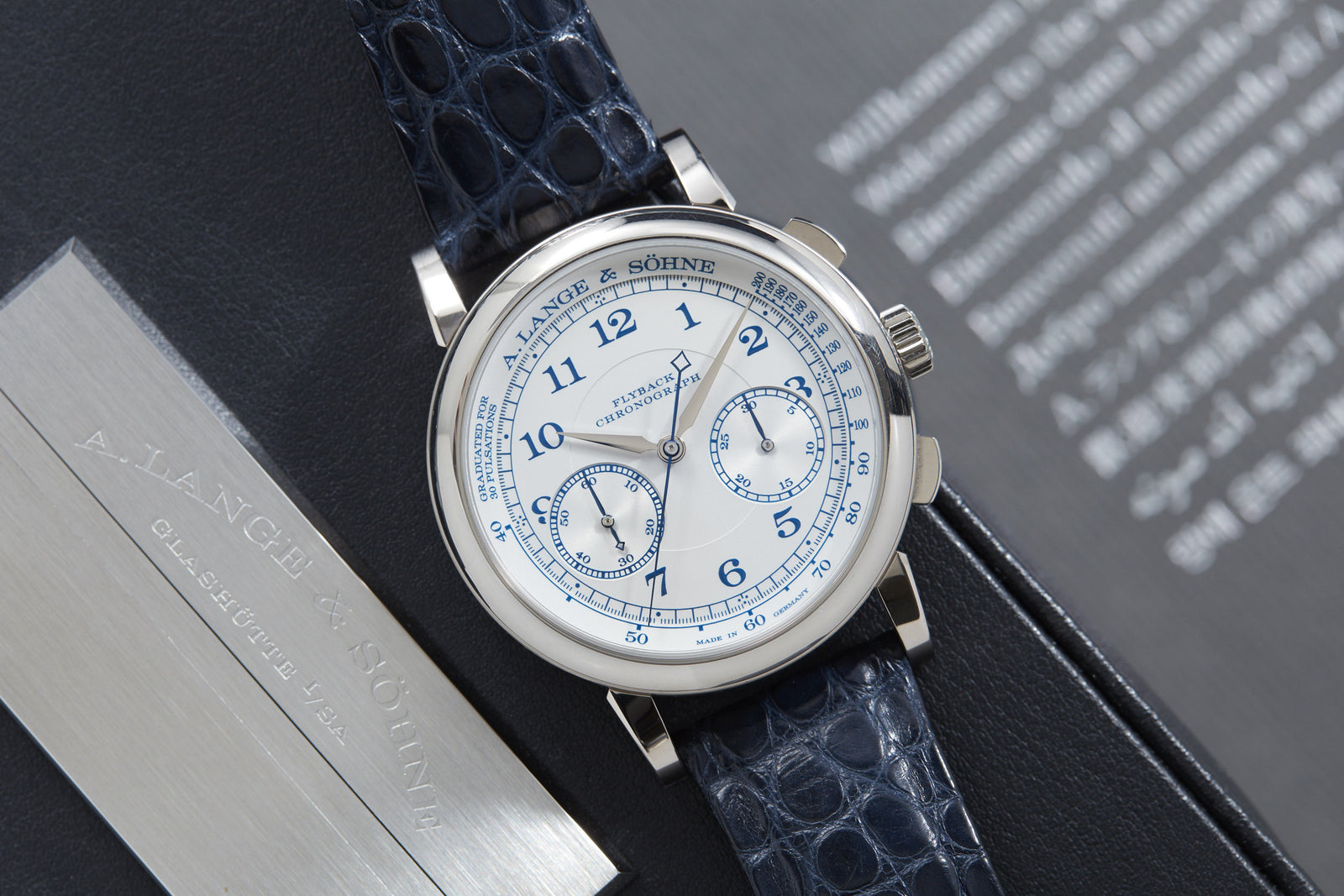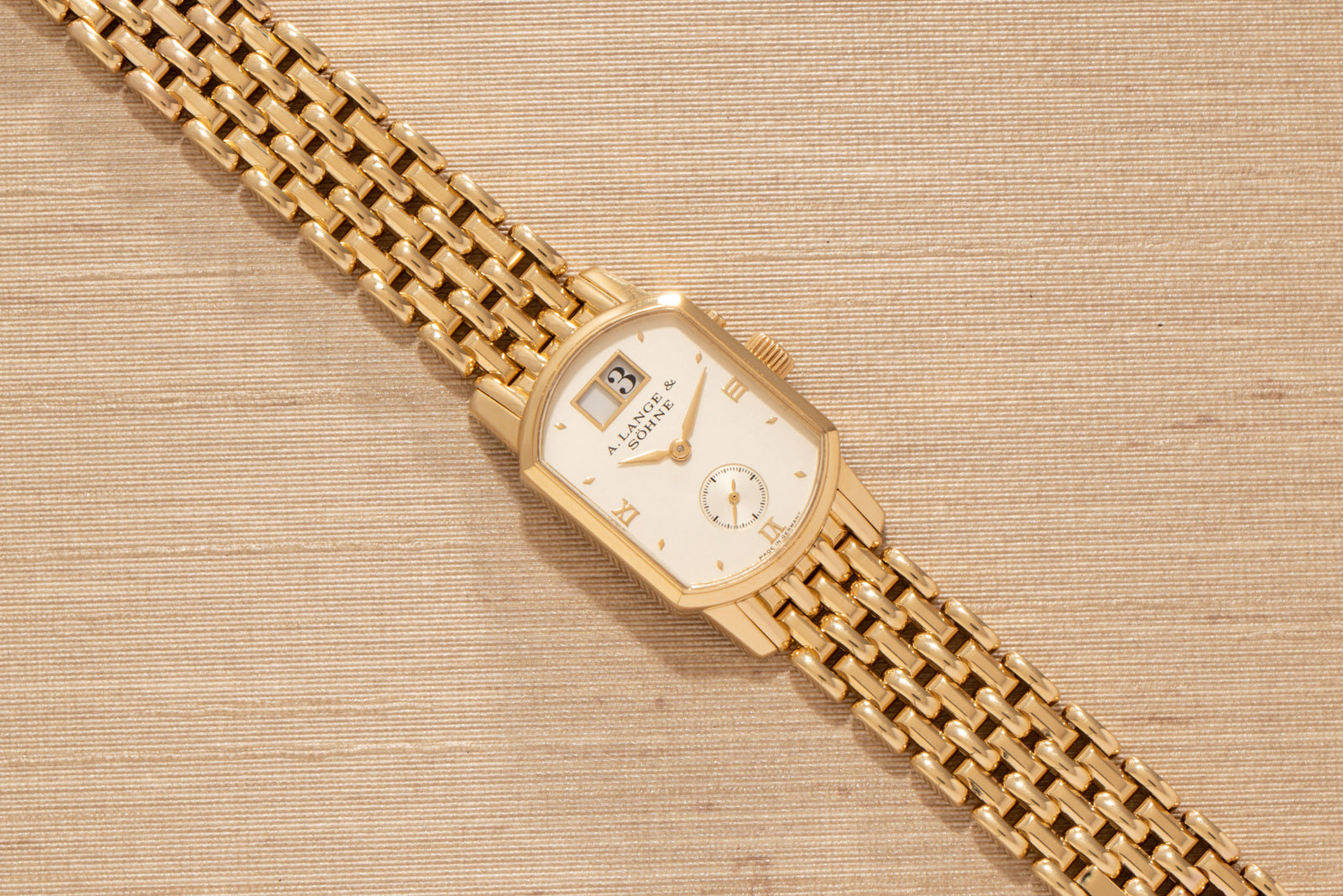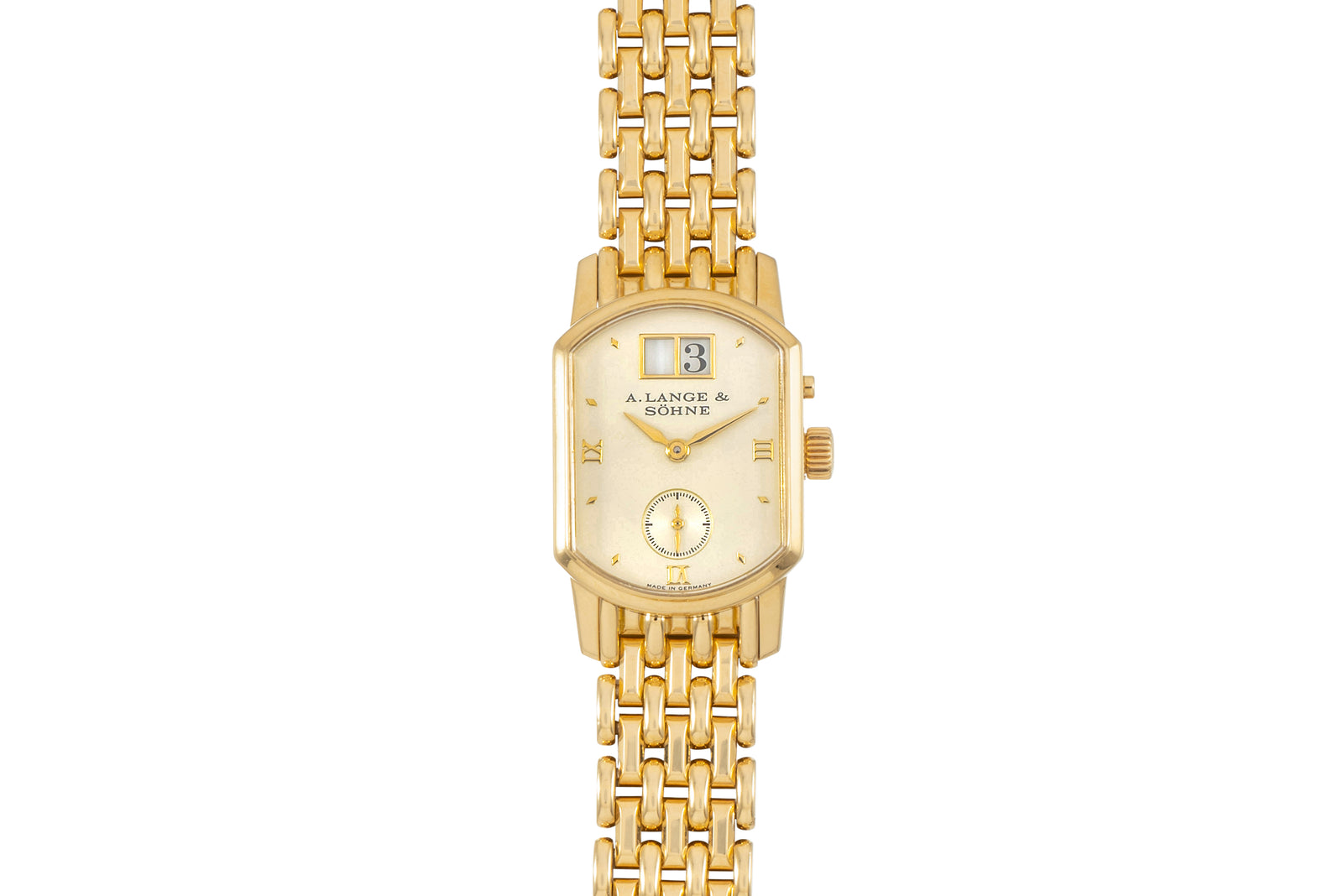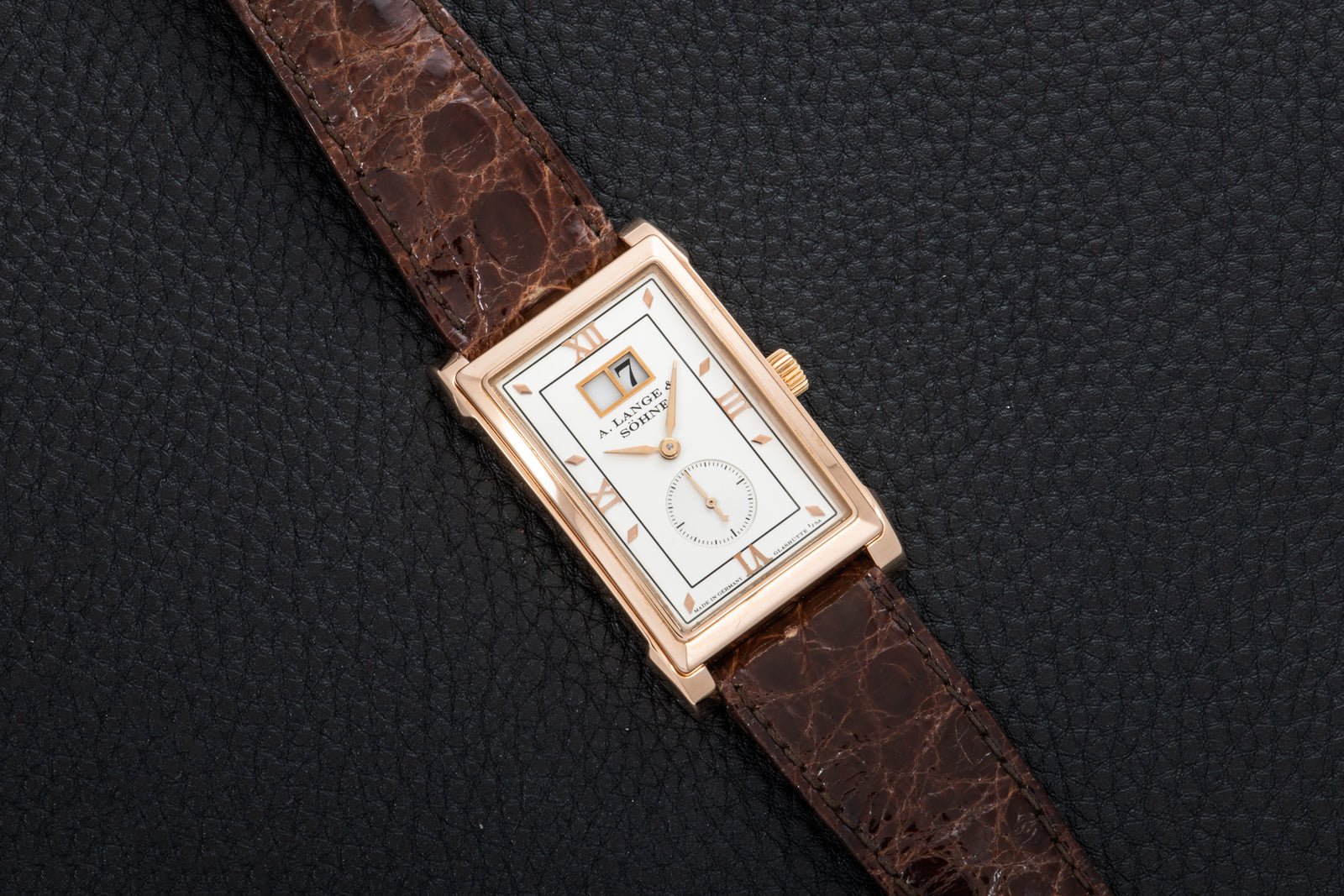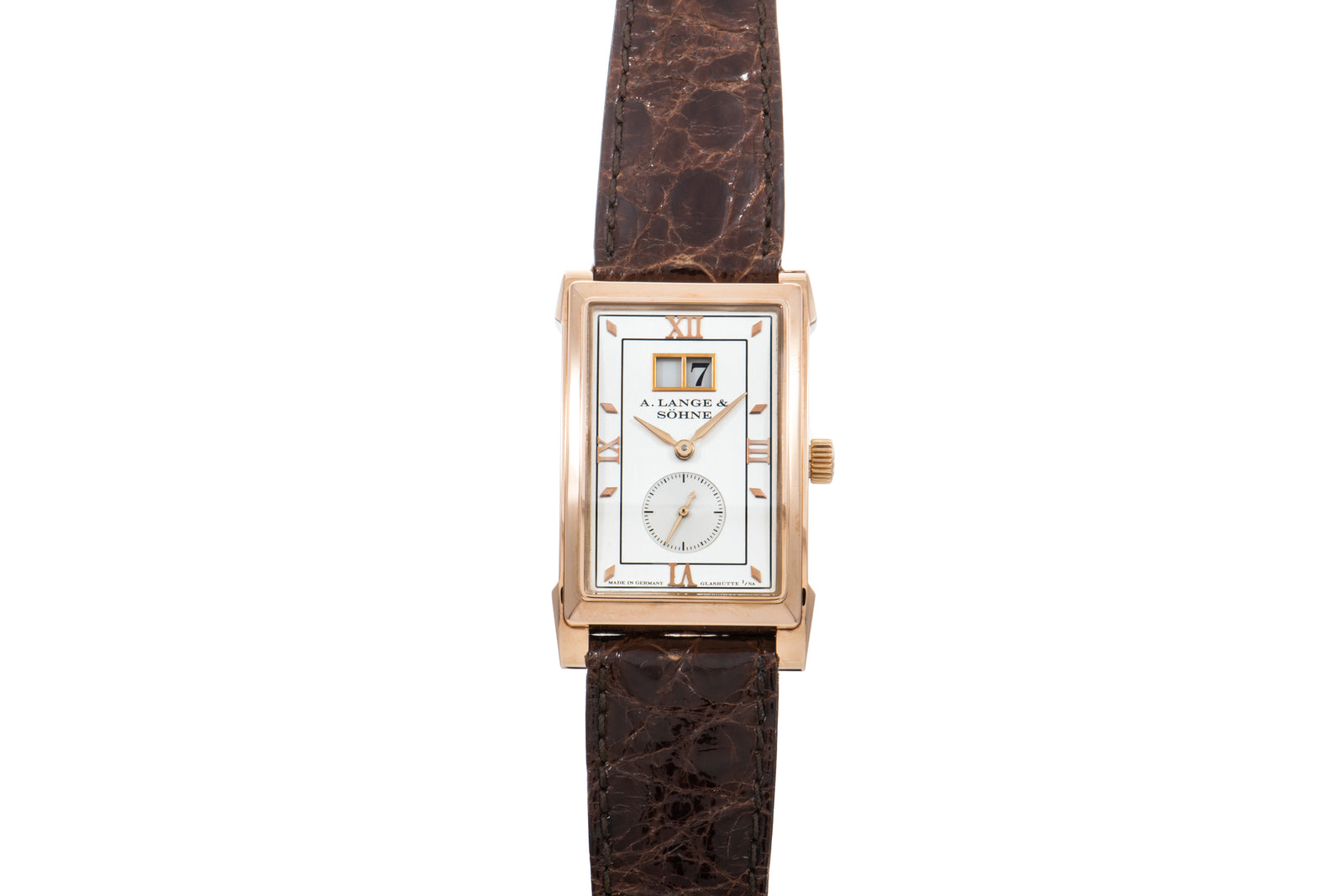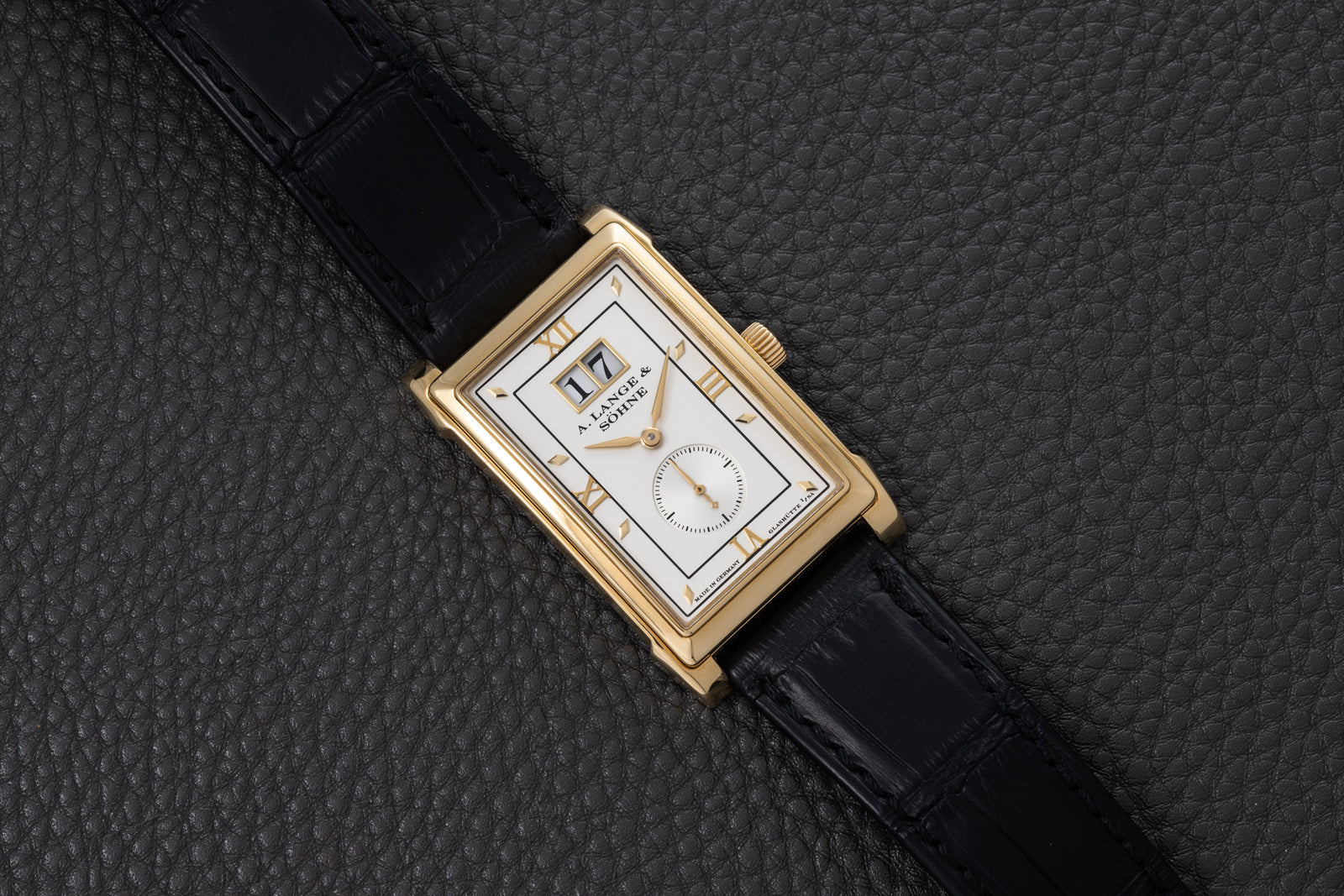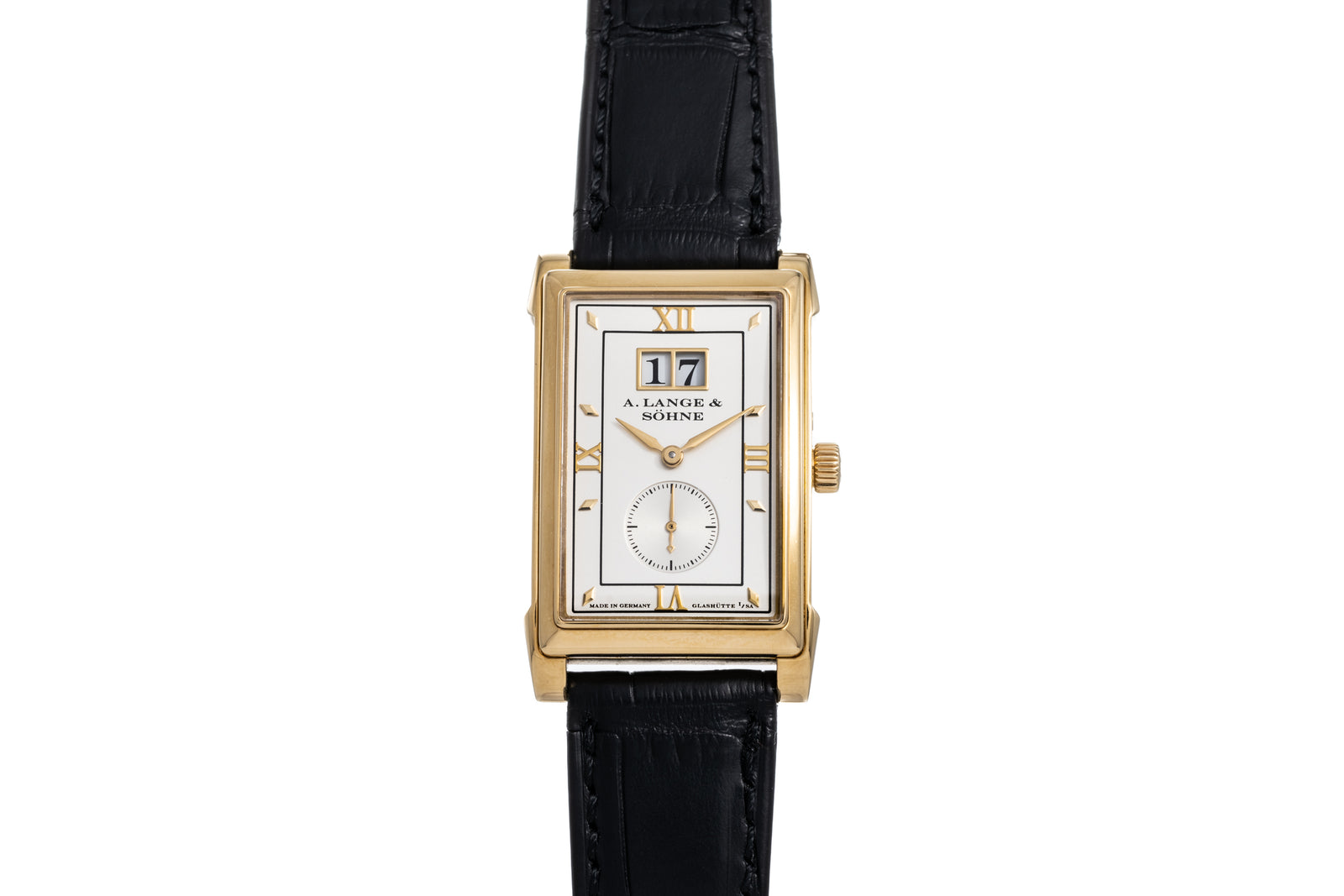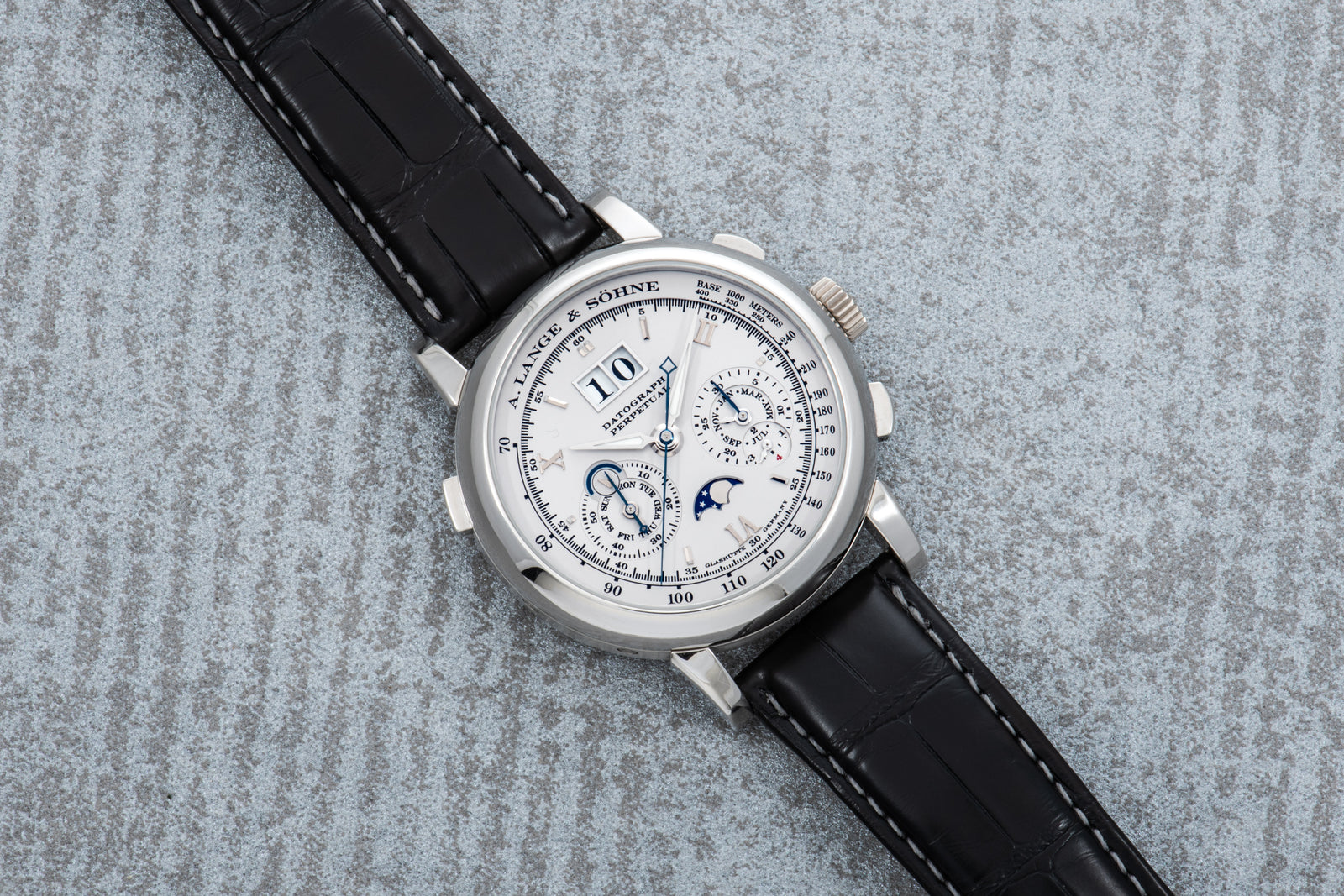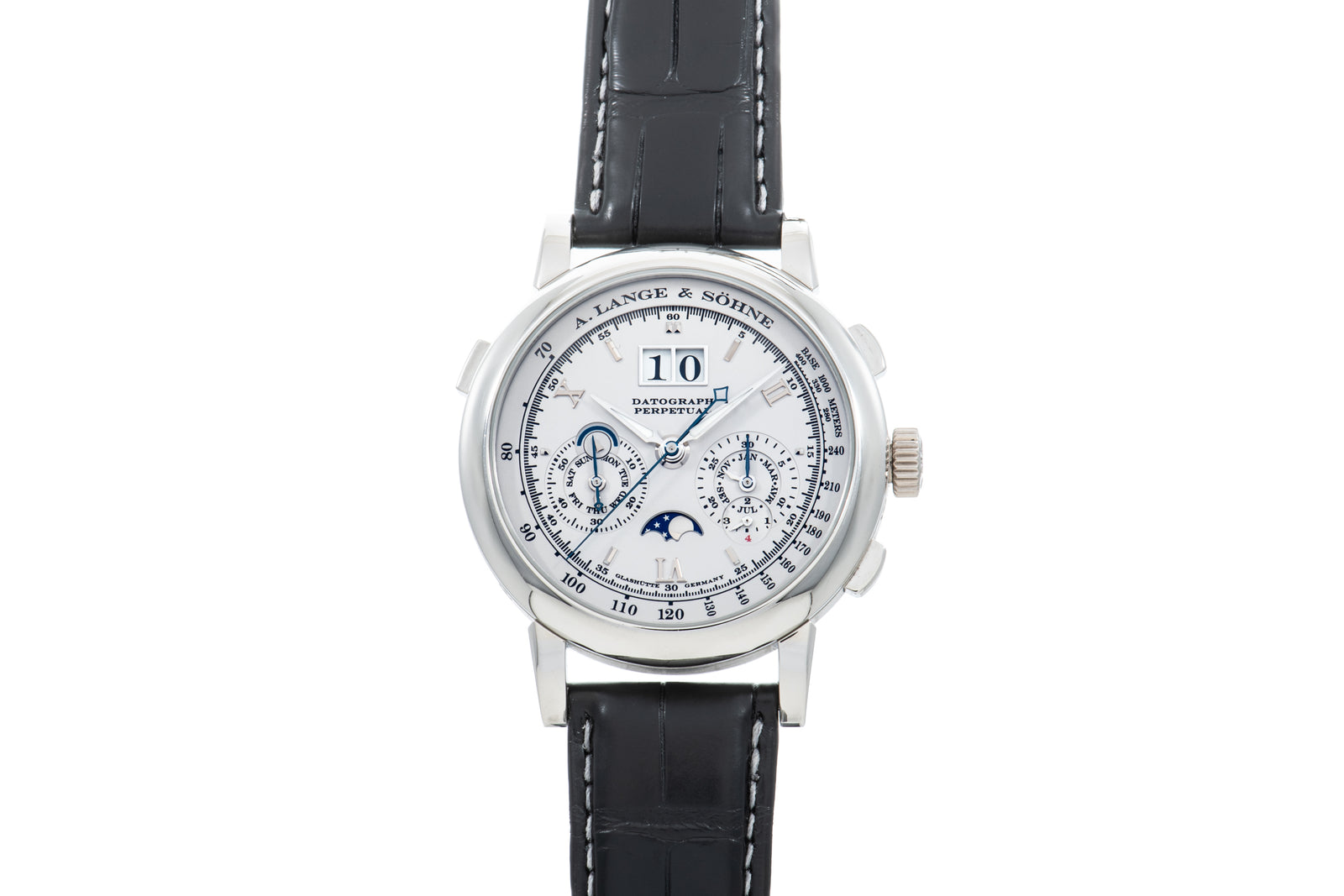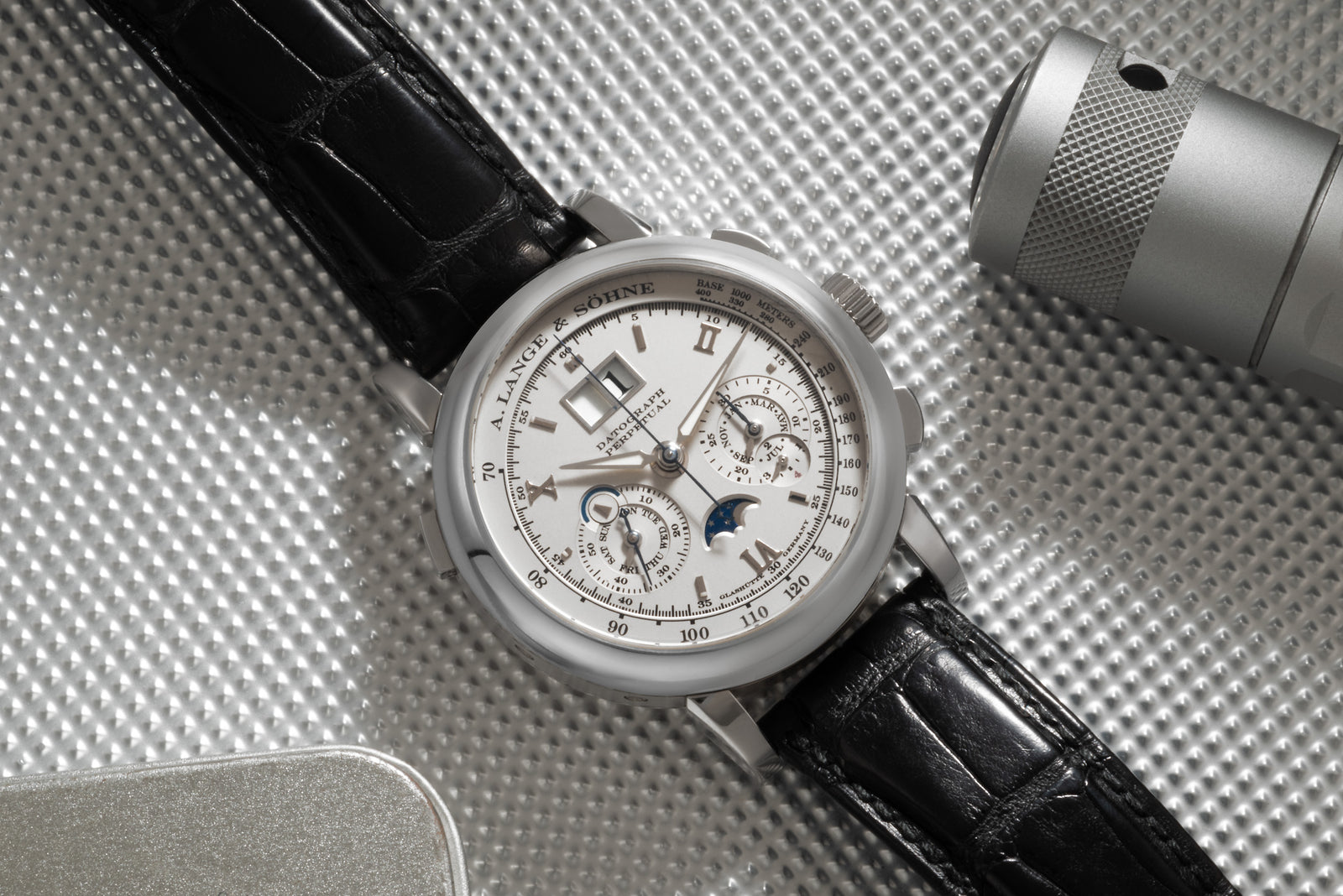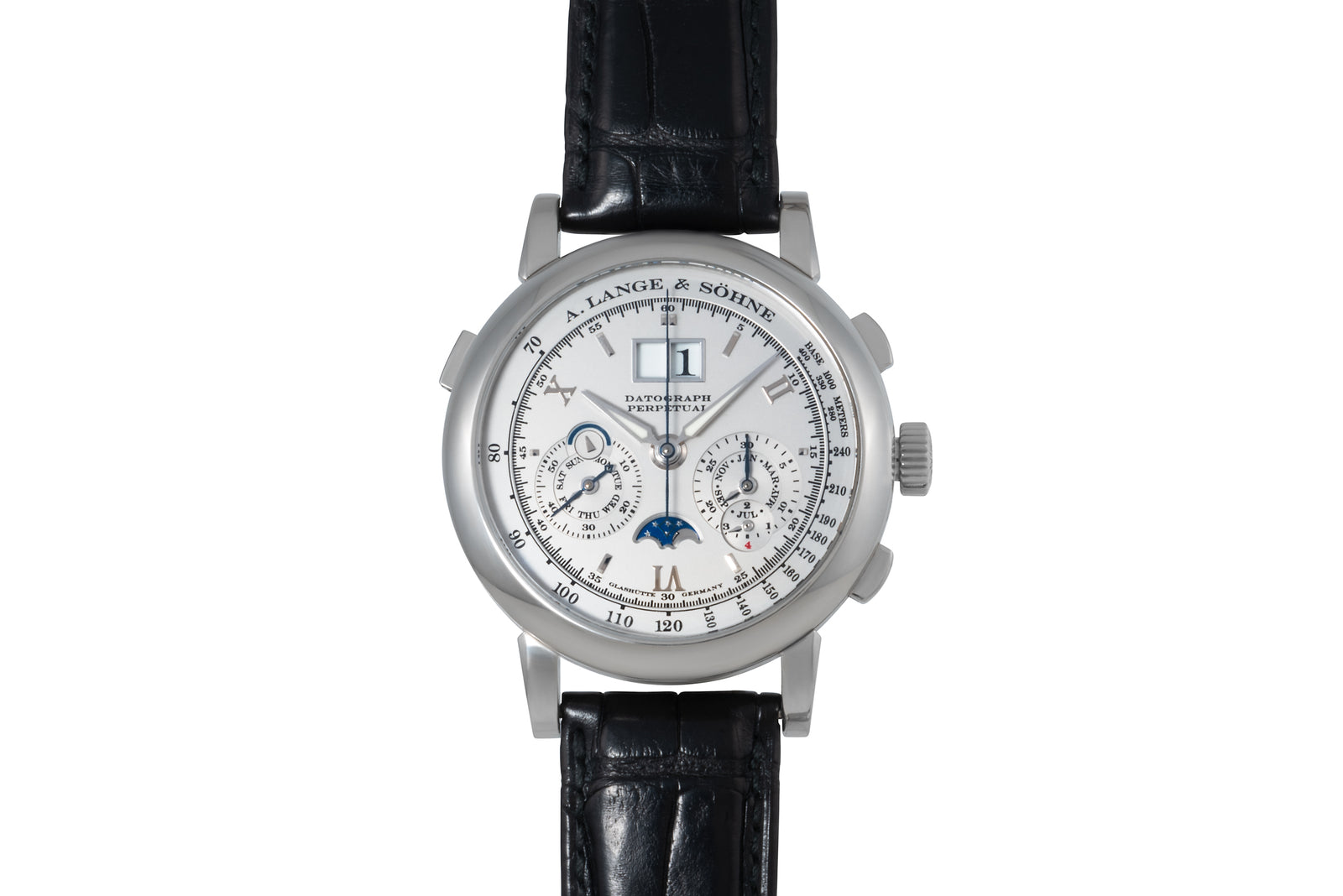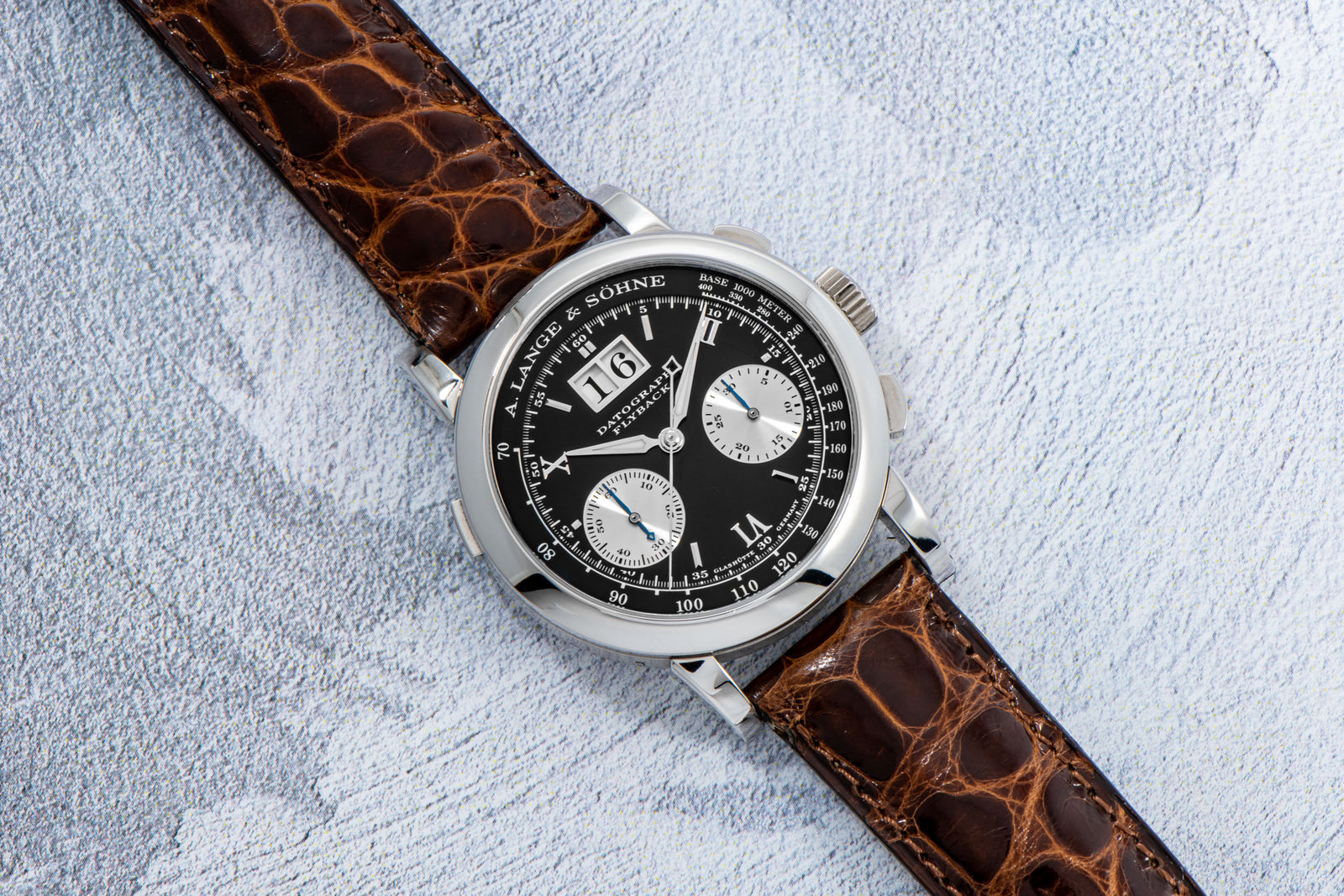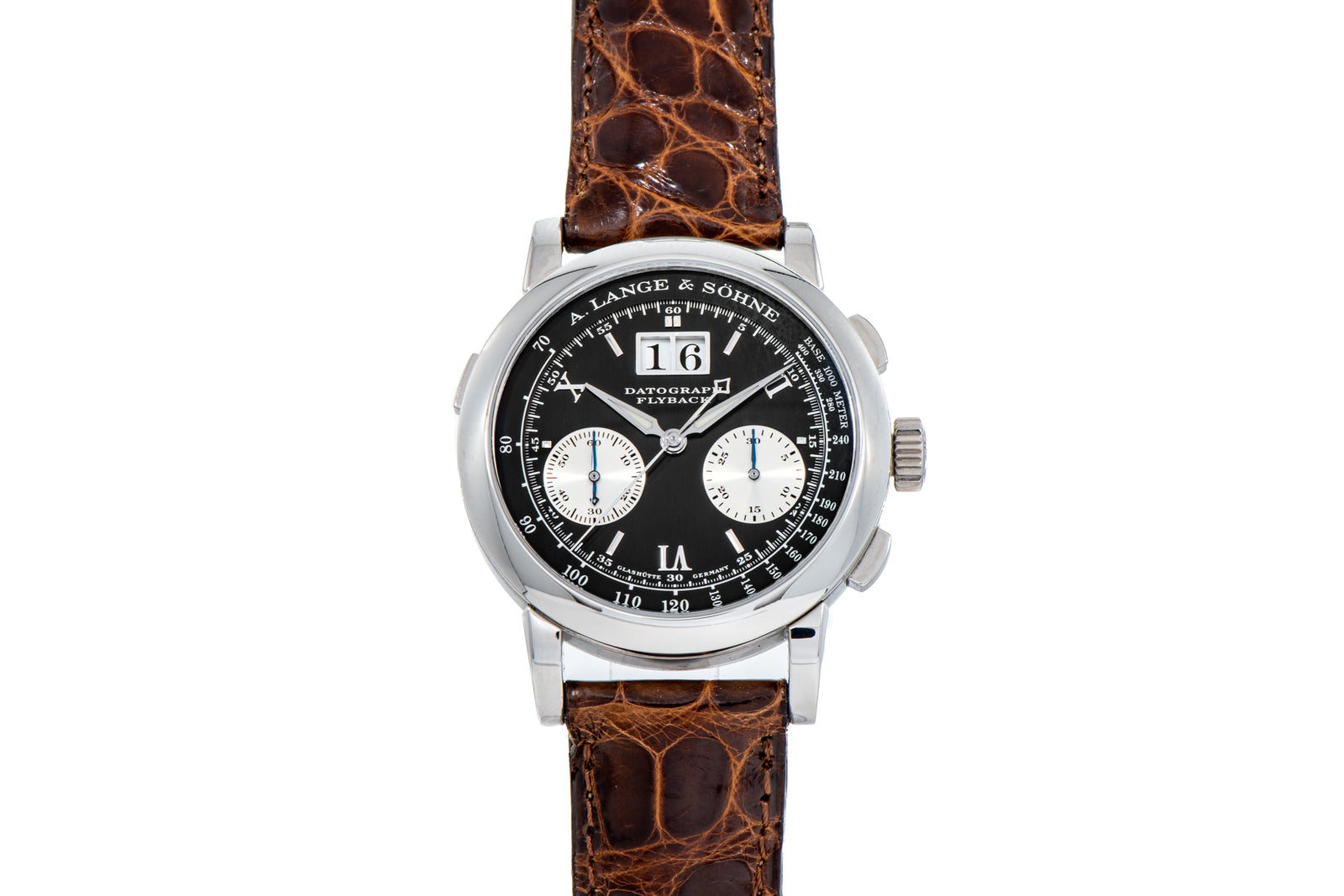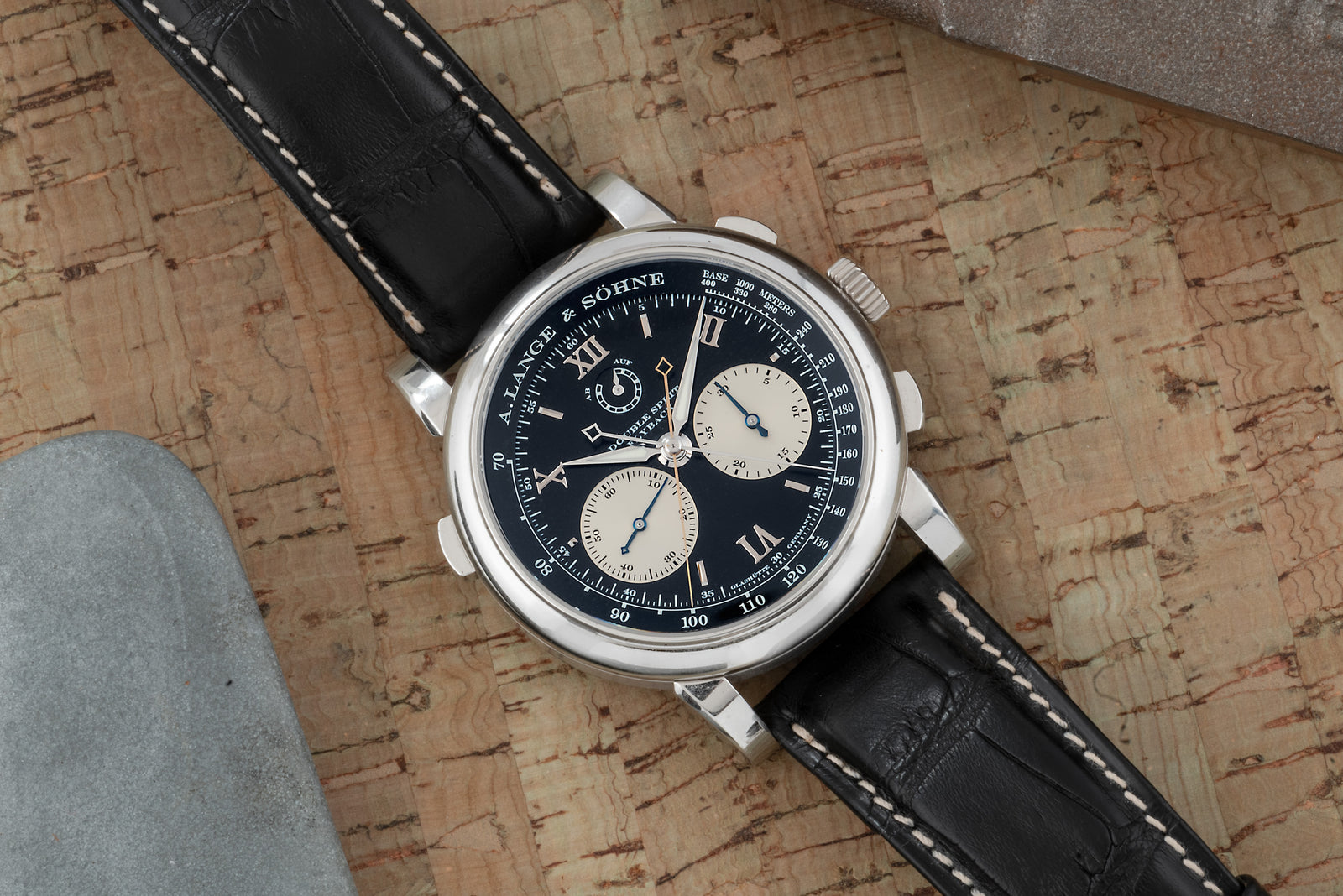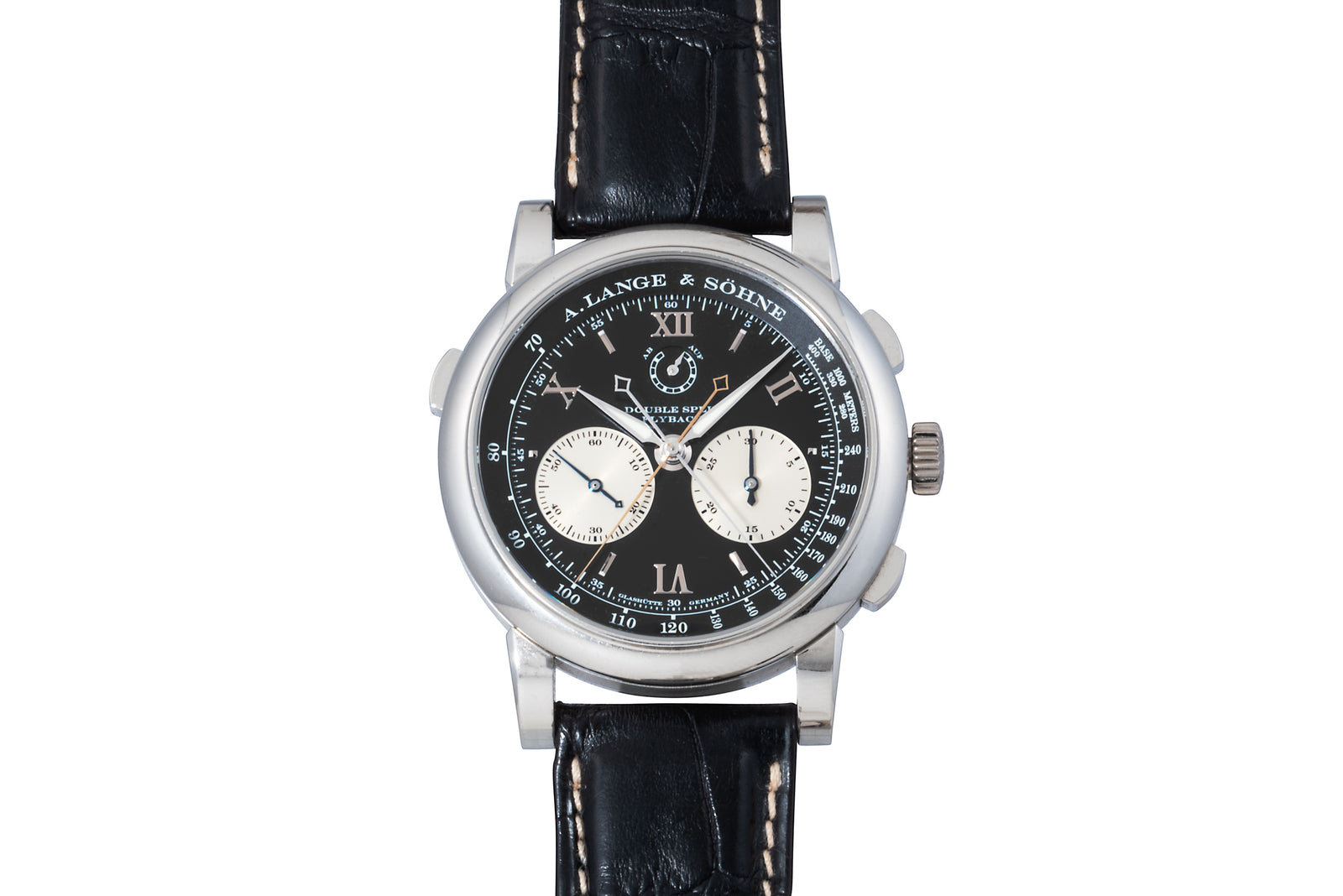Heuer Carrera
- Soldspan>
- Sold
Why We Love it
–
Why We Love it
–The Heuer Carrera’s story starts with a race, but the race began with a dream—a dream that united continents and took almost a hundred years to fulfill, claiming countless lives in the process.
The idea of connecting North and South America by rail was raised at the Pan-American Conference in 1889. Though the Conference met its goal of fostering a spirit of “Pan-Americanism” between the nations of North and South America, the grand pan-American railway system never came to fruition. But by the mid-1920s, as Henry Ford watched the 15 millionth Model T roll off his assembly line, the notion of a cross-continental railway system metamorphosed into that of a massive highway linking North and South America.
At last, on December 23, 1936, the Convention on the Pan-American Highway was signed by representatives from Bolivia, Chile, Colombia, Costa Rica, El Salvador, Guatemala, Honduras, Mexico, Nicaragua, Panama, Peru, Canada, and the United States.
The terms of the Convention read, in part:
“… Considering, finally, that one of the most adequate and efficient means for the attainment of the moral and material end aimed at jointly by the American Republics, is the termination of a highway which establishes a permanent communication between their respective territories… the High Contracting Parties agree to collaborate, with all diligence and by all adequate means, in the speedy completion of a Pan-American Highway, which will permit at all times the transit of motor vehicles.”
The North American parts of the Highway were built upon the bones of the Intra-American Highway between Nuevo Laredo and Honduras, with construction to follow in South America.
By 1938, Foreign Affairs magazine reported that: “Of the 3294 miles of the projected highway between Nuevo Laredo and Panama, 1615 are completed and open to all-weather traffic. More than one half of the 1640 miles in Mexico are already open, nearly all with an excellent hard surface. To construct all-weather roads on the remaining sections from Mexico to Panama will cost, it is estimated, approximately $55,000,000; concrete construction would cost over $150,000,000.”
However, as far as the South American nations were concerned, Foreign Affairs had this to say: “The South American governments have not definitely agreed upon any particular route to be followed by the Pan American Highway south of Panama. In many cases it will, of course, make use of the extensive road systems which the individual countries have been constructing in recent years. However, long segments of it will have to be hewn out of the virgin wilderness.”
Hew it out of the virgin wilderness they did, with vast stretches of it going unpatrolled by local police, leading locals to call a 10,942 foot high portion of it in Costa Rica “the Summit of Death.”
But that name could also have been applied to the section of Mexican highway upon which the infamous Carrera Panamericana took place from 1950 to 1954.
Mexico had paid for their portion of the highway entirely themselves. To celebrate the completion of it in 1950, the federal government inaugurated the Carrera Panamericana. The race—which was projected to last for five days—stretched along almost all of the 2,178 mile highway from Ciudad Juarez in the north to El Ocotal (now Ciudad Cuauhtémoc) on the Guatemalan border, in the south.
Drivers from all manner of racing (from Formula 1 to NASCAR) participated; but due to the sheer diversity of terrain along the highway—from mountainous deserts in the north to jungles in the south—the elevation changed drastically from 328 feet to 10,482 feet above sea level, and many of the drivers proved no match to its twists and turns.
During this first race, four people died, giving the Carrera Panamaricana a deadly reputation—which was to prove even more sinister in following years.
In 1951 the race was run from south to north. A car dealer and experienced driver, José Estrada, declared at the start, “I will win, or die trying.” He and his co-driver Miguel González would die in the first stage of the race when his 1951 Packard plunged 630 feet into a ravine.
On the second day, the race claimed the life of veteran aviator Carlos Panini, who crashed into a rock wall while trying to intercept another driver.
These deaths—along with the death of the mayor of Oaxaca, Lorenzo Mayoral Lemus—caused an uproar in the Mexican press, and yet it continued for two more years, claiming the lives of a further seventeen people until it was finally cancelled in 1955.
A longtime racing aficionado, Jack Heuer first heard of the race in a conversation with the parents of the legendary Rodriguez brothers (both drivers). The name haunted him, and he registered it in 1962.
By the next year Heuer had conceived of the watch that would bear its name and secure his legacy: the Carrera.
Heuer’s obsession with legibility cleaned up the Carrera’s dial in a way that hadn't quite been achieved before. Here now is a watch that shows you only the minimal amount of information, with plain baton markers: clean, uncluttered, undeniably attractive. Early Carreras were produced in a variety of styles with a range of dials, but black-on-black continues to be the most desirable amongst purest collectors.
This particular Carrera is a Reference 2447N. One of the cleanest examples of an early Mark I silver script 2447N we've seen, it has received tender loving care at the hands of a master watchmaker, who's restored the clean lines and sharp colors of this beautiful watch. For a watch designed in the 1960s, the Carrera remains a stunner, proving the brilliance of Heuer's design philosophy and making it a watch you won't want to pass up.
A:S Guarantee
+
A:S Guarantee
+Our Pledge
Analog:Shift stands behind the authenticity of our products in perpetuity.
Condition
Since our pieces are vintage or pre-owned, please expect wear & patina from usage and age. Please read each item description and examine all product images.
Warranty
We back each Analog:Shift vintage timepiece with a two-year mechanical warranty from the date of purchase.
International Buyers
Please contact us prior to purchase for additional details on shipping and payment options.
Shipping & Returns
+
Shipping & Returns
+All of our watches include complementary insured shipping within the 50 states.
Most of our products are on hand and will ship directly from our headquarters in New York City. In some cases, watches will be shipped directly from one of our authorized partners.
We generally ship our products via FedEx, fully insured, within 5 business days of purchase. An adult signature is required for receipt of all packages for insurance purposes. Expedited shipping is available at an additional cost. We are also happy to hand deliver your purchase in Manhattan or you may pick it up at our showroom.
Returns must be sent overnight or by priority international delivery, fully insured and paid for by the customer. A restocking fee may apply. Watches must be returned in the same condition as initially shipped.
We welcome international buyers, please contact us prior to purchase for additional details on shipping and payment options.







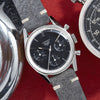
Heuer Carrera
- Soldspan>
- Sold
